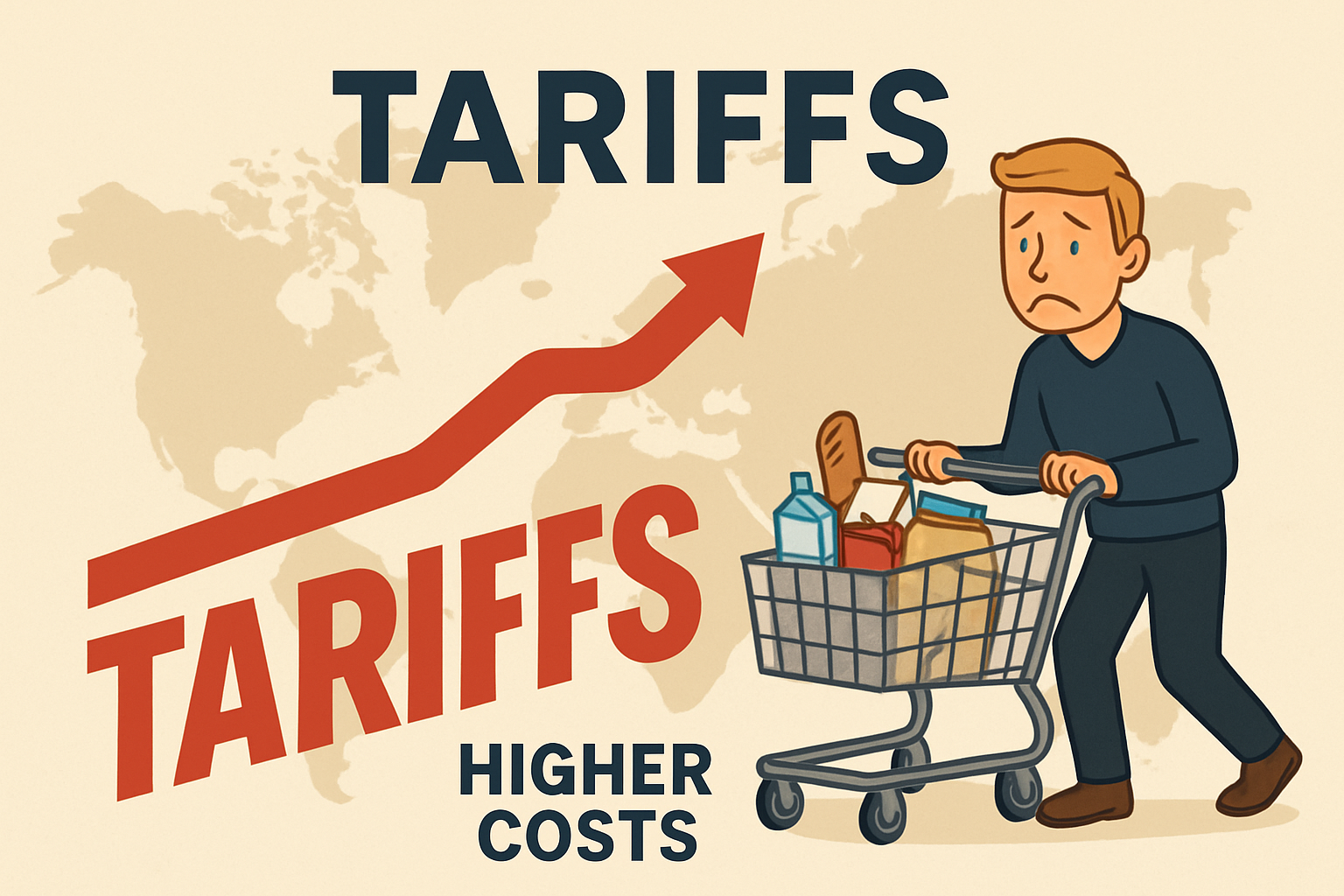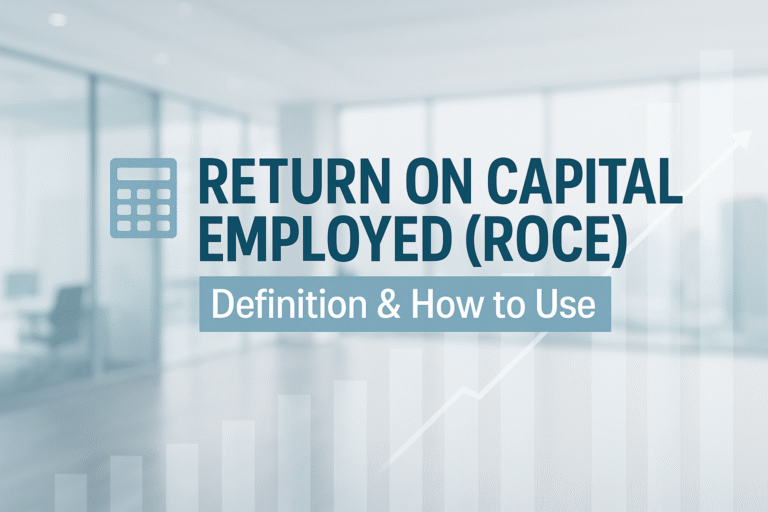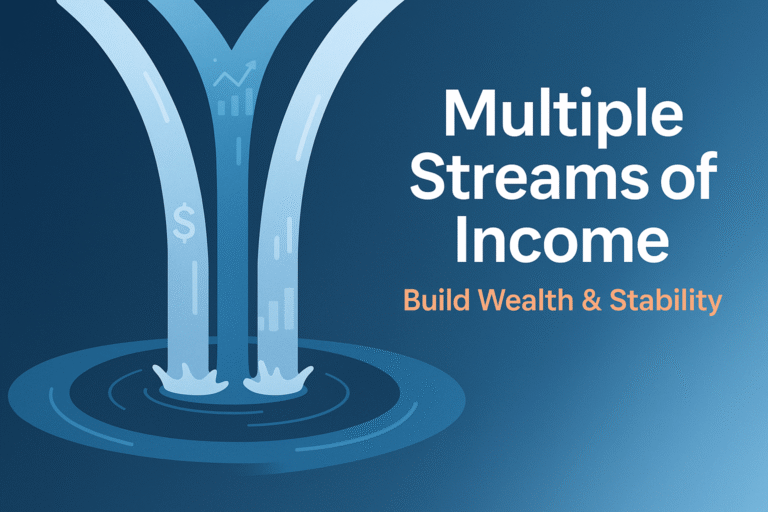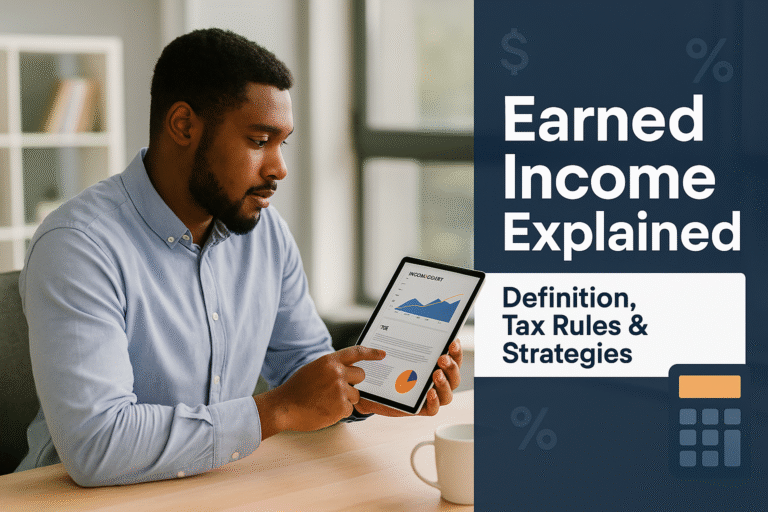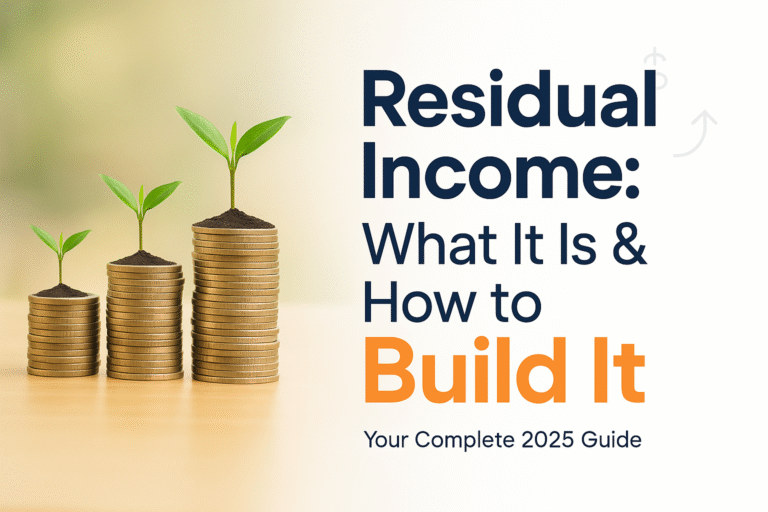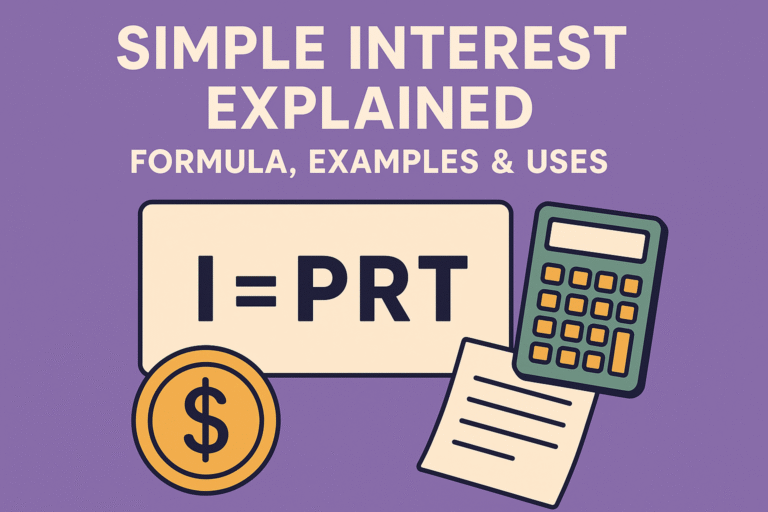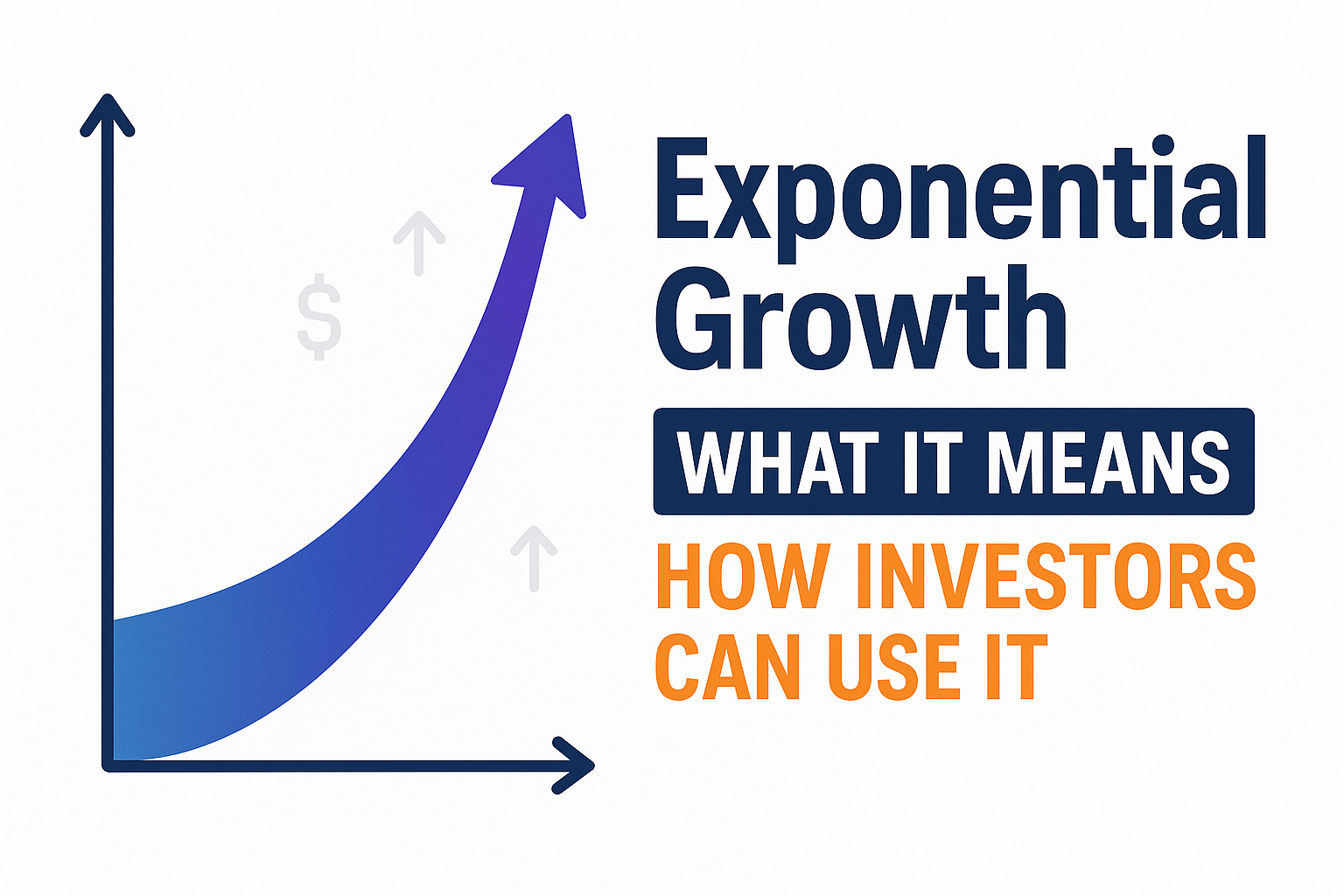Tariffs sound like a political buzzword that only affects global trade deals and foreign governments, but in 2025, they’ll hit much closer to home. Under President Trump’s second administration, a new wave of tariffs (Trump tariffs) has surged across sectors ranging from electronics and automobiles to food and apparel.
The result? American consumers and investors are starting to feel the squeeze—with households paying an estimated $1,000–$1,200 more per year due to rising costs.
In this guide, we’ll break down:
- What Trump’s tariffs are and why they were implemented
- The real impact on your wallet and investment portfolio
- How to prepare and protect your financial future
Whether you’re a shopper, saver, or investor, understanding how Trump’s tariffs affect your daily life is critical in today’s economic climate.
What Are Trump 2025 Tariffs?
Tariffs are taxes imposed on imported goods. When a country (like the U.S.) places tariffs on products from abroad, it makes those imports more expensive. The idea is to promote domestic manufacturing by discouraging imports.
In 2025, President Trump used national emergency powers and reciprocal trade arguments to expand tariffs on a wide range of countries and products. These include:
- Tariffs on Chinese and Mexican imports (electronics, appliances, auto parts)
- Steel and aluminum tariffs (reinstated at 25%)
- New tariffs on European Union luxury goods and machinery
- Expanded tariffs on Canadian and Asian consumer goods
These policies reflect Trump’s “America First” approach, protecting domestic industries by raising the cost of foreign competition. But as we’ll see, the cost often gets passed directly to consumers.
Key Changes in the 2025 Trump Tariffs Landscape
A Dramatic Jump in Import Taxes
Before 2025, the average U.S. tariff rate was around 2.5%. Under Trump’s new measures, this rate has surged to 27% or higher on select goods. This is one of the largest post–World War II trade shocks in U.S. history.
Targeted Sectors
The industries hit hardest include:
- Consumer electronics (laptops, tablets, phones)
- Automobiles and auto parts
- Apparel and footwear
- Groceries and packaged food imports
- Furniture and home goods
Source: Forbes on electronics cost hikes
How These Trump Tariffs Are Costing You More
Estimated Increase in Household Spending: $1,200+
Analysts from MarketWatch and the Brookings Institution estimate the average American household will spend $1,000 to $1,200 more per year in 2025 due to price increases linked to Trump’s tariffs.
That might not sound catastrophic, but when you break it down:
- $100 more for smartphones
- $250 more for laptops and tablets
- $300 more in annual clothing expenses
- $150+ extra for groceries and imported foods
Those increases add up fast, especially for middle-class families.
Pie Chart: Where the Extra Costs Come From
Here’s a breakdown of the main categories affected by tariffs:
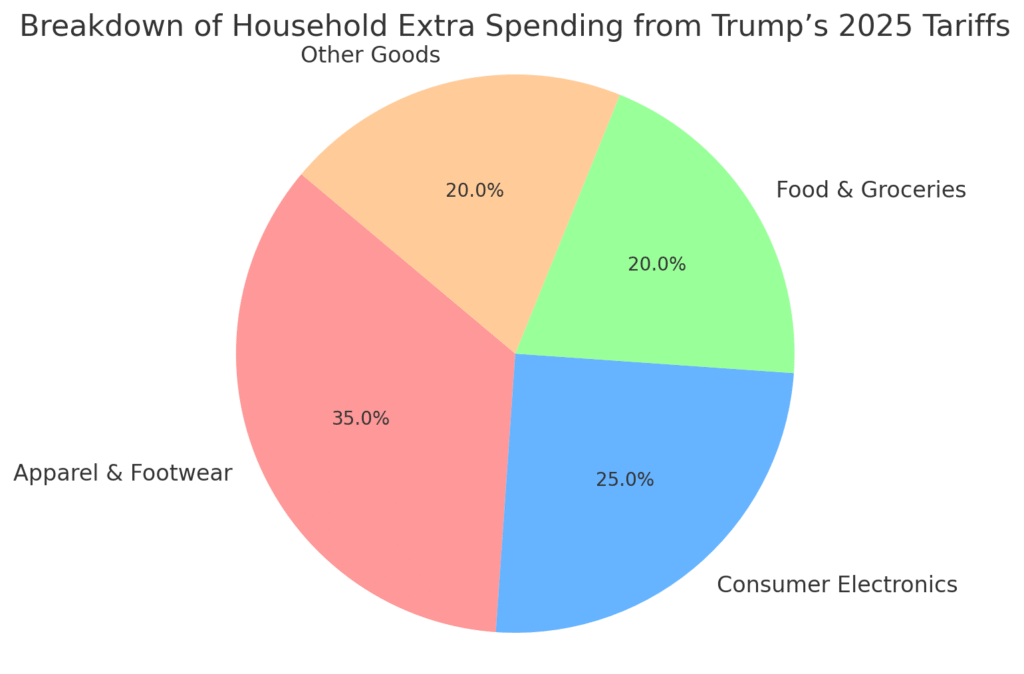
Pie chart: Estimated household tariff impact (source: MarketWatch)
- Apparel & Footwear: 35%
- Consumer Electronics: 25%
- Food & Groceries: 20%
- Miscellaneous (toys, home goods, auto parts): 20%
Market and Investor Reactions
Increased Stock Volatility
Financial markets dislike uncertainty, and tariffs bring a lot of it. As the trade landscape shifts, sectors like tech, retail, and automotive have seen increased volatility.
- Apple, Tesla, and GM have all warned of rising supply chain costs.
- Semiconductor and electronics manufacturers are re-evaluating overseas operations.
- The S&P 500 saw a 6% dip following initial tariff announcements in Q1 2025.
Pressure on International ETFs
Global ETFs and funds with heavy foreign supply chain exposure have underperformed in the first half of 2025. Investors are rotating toward domestically focused dividend stocks and value-oriented funds.
See also: Top 5 ESG ETFs to Buy and Hold
Is the Economic Impact of Trump Tariffs as Bad as It Seems?
Revenue vs. Inflation
While the government is collecting over $127 billion in tariff revenue, that doesn’t offset the consumer-level inflationary effects. Tariffs are a hidden tax that consumers pay indirectly via higher prices.
Manufacturing Rebound: Still Slow
The goal of tariffs was to boost American manufacturing. But economists argue that reshoring efforts haven’t matched expectations. U.S. companies face higher input costs, and automation often reduces the job creation effect.
How to Protect Your Wallet and Portfolio
1. Budget Smarter: Adjust Spending Habits
- Delay big-ticket purchases (laptops, cars) until deals or policy reversals emerge
- Switch to domestic or generic brands
- Use cashback & couponing to combat price inflation
- Bulk buy non-perishables before seasonal price increases
2. Optimize Your Investment Strategy
- Diversify internationally: Look to countries not directly affected by U.S. tariffs (e.g., Brazil, India)
- Rebalance toward dividend and value stocks that produce steady cash flows
- Avoid overexposure to consumer discretionary sectors with global supply chains
- Watch inflation-protected securities (TIPS) and real assets like REITs or commodities
What’s Next? The Future of Trump’s Tariff Policy
Legal Challenges & Policy Uncertainty
Multiple industries are suing the government over the use of national emergency powers for tariffs. Courts may limit or overturn some actions, but for now, tariffs remain in place.
Trade War 2.0?
China, the EU, and Mexico are preparing counter-tariffs, which could further affect prices and exports. Expect ongoing instability in 2025–2026.
Outbound resource: Bruegel analysis on Trump’s trade impact on Europe
Conclusion: Your Action Plan in a Tariff World
Trump’s 2025 tariffs have redefined how trade policy impacts everyday Americans. From rising grocery bills to costlier gadgets and shakier portfolios, the financial effects are real, and likely to persist.
But with smart budgeting, diversified investing, and a clear eye on economic developments, you can stay ahead of the curve.

